Workplace harassment is a widespread issue, and healthcare is no exception. In healthcare settings, harassment not only impacts employees but also affects patient care and safety. A global survey by ILO-Lloyd’s Register Foundation-Gallup found that 17.9% of workers have experienced psychological harassment, 8.5% have faced physical harassment, and 6.3% reported experiencing sexual harassment, with women being particularly vulnerable. These numbers highlight how common workplace harassment is and the need for stronger preventive measures—especially in healthcare, where demanding work environments, long shifts, and rigid hierarchies can make it easier for harassment to go unchecked.
Harassment in healthcare can lead to burnout, lower staff morale, and higher turnover, which in turn affects the quality of patient care. A toxic work environment weakens communication, teamwork, and decision-making—critical components of patient safety and ethical healthcare. For healthcare professionals to provide the best care, they must work in an environment built on respect, free from threats or discrimination. That’s why it’s essential for healthcare managers to take action to prevent harassment and create a safe and supportive workplace.
Ensuring a respectful and professional workplace is not just a legal obligation for healthcare managers—it’s a responsibility that directly impacts employee well-being and patient outcomes. By establishing clear policies, fostering accountability, and promoting a culture of respect, managers can play a key role in preventing workplace harassment. Here’s how they can take proactive steps to create a harassment-free healthcare environment.
Recognizing Workplace Harassment in Healthcare
Harassment in healthcare can take different forms, including:
- Sexual harassment – Unwanted advances, inappropriate remarks, or coercion.
- Verbal harassment – Insults, belittling, or demeaning comments.
- Physical harassment – Unwanted contact or threats of violence.
- Discriminatory harassment – Targeting someone based on race, gender, religion, age, disability, or other protected characteristics.
- Bullying and intimidation – Repeated mistreatment, humiliation, or exclusion.
The Manager’s Role in Preventing Workplace Harassment
1. Establish and Enforce Clear Policies
Healthcare managers must ensure their organizations have clear anti-harassment policies, which should include:
- A zero-tolerance policy for harassment.
- Definitions and examples of harassment.
- Steps for reporting and addressing complaints.
- Confidentiality protections for victims and witnesses.
- Consequences for those found guilty of harassment.
Your policies should be more than just written guidelines—they should be actively embraced by everyone, from senior management to frontline staff. Conduct regular training sessions to ensure that every team member understands their responsibility in upholding product safety, compliance, and integrity.
2. Provide Mandatory Training for Staff and Managers
Regular training is essential in healthcare settings. Managers should:
- Hold annual training sessions for all employees.
- Offer specialized training for leadership on handling complaints.
- Use real-life examples and interactive discussions.
- Teach bystander intervention strategies.
Workplaces that provide structured training see fewer harassment cases because employees are more aware of what constitutes inappropriate behavior and how to respond.
3. Create a Safe Reporting System
Reporting and Confidentiality: Employees may be reluctant to report harassment due to concerns about retaliation or a lack of trust in confidentiality. This can weaken the policy’s impact and allow incidents to go unresolved.
To ensure a safe reporting environment, managers should:
- Offer anonymous reporting options.
- Use a third-party reporting system for impartiality.
- Enforce strict no-retaliation policies.
- Investigate complaints quickly and fairly.
Employees need confidence that their concerns will be taken seriously and handled appropriately.
4. Lead by Example
Managers set the tone for workplace culture. When leaders demonstrate respect, professionalism, and inclusivity, employees are more likely to follow their lead. Managers should:
- Maintain open communication with staff.
- Address misconduct immediately, regardless of rank.
- Ensure accountability for everyone.
- Support employees who report issues.
A workplace where managers ignore or engage in harassment creates fear and silence. Leading by example ensures policies are respected and followed.
5. Foster a Culture of Respect and Inclusion
Harassment often thrives in unhealthy work environments. Managers can create a more respectful culture by:
- Encouraging teamwork and collaboration.
- Addressing biases and microaggressions.
- Implementing mentorship programs for professional growth.
- Celebrating diversity and inclusion.
A positive workplace not only prevents harassment but also improves employee morale, retention, and patient care.
6. Act Quickly and Fairly
When harassment occurs, managers must take swift and appropriate action. Delayed or weak responses can lead to:
- Legal consequences for the organization.
- Loss of employee trust.
- High turnover rates.
Every complaint should be thoroughly investigated, and appropriate consequences should follow to prevent repeat offenses.
7. Support Affected Employees
Harassment can have lasting emotional and professional impacts on victims. Managers should ensure affected employees receive support such as:
- Confidential counseling services.
- Workplace adjustments, if needed (e.g., shift changes).
- Legal assistance, if necessary.
- Regular follow-ups to check on well-being.
When employees feel supported, they are more likely to report harassment and help build a safer work environment.
Conclusion: A Call to Action for Healthcare Managers
Preventing workplace harassment in healthcare requires strong leadership, clear policies, and a commitment to accountability. Managers play a crucial role in shaping a safe, respectful, and professional work environment.
By implementing effective anti-harassment measures, providing ongoing training, ensuring safe reporting channels, and leading by example, managers can protect employees, improve job satisfaction, and enhance patient care.
Harassment prevention isn’t just about following regulations—it’s about creating a workplace where everyone feels safe, valued, and respected.
Ensure Compliance, Boost Efficiency, and Foster Trust
A strong harassment prevention program does more than protect employees—it also ensures compliance with workplace regulations, improves efficiency by reducing workplace conflicts, and fosters a culture of trust where employees feel valued and respected. Proactive training and policy enforcement can help healthcare managers create a safer, more inclusive workplace while reducing legal risks and improving team morale.
Take the first step today! Enroll your large team in our customized, free course development program and empower your workforce with the knowledge and tools to maintain a harassment-free environment. Enroll now!



